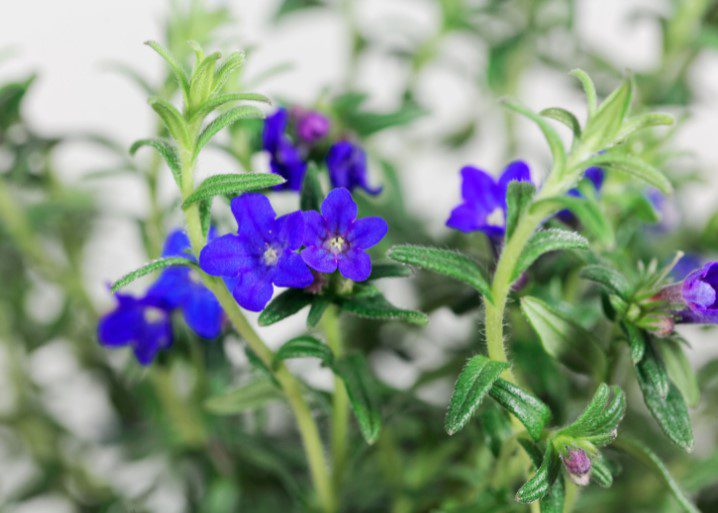Lithodora Diffusa
What is Lithodora? This ground cover, botanically known as Lithodora diffusa, produces large quantities of star-shaped, tiny flowers that are intensely blue from late spring through most of summer.
Lithodora grown in gardens can reach heights of 6-10 inches (15-25 cm). A single plant can grow to 24 to 36 inches (61-91 cm). Lithodora can be grown in USDA zones 6-10.
The thick, dense, dark-green foliage of the southern ranges is green all year. Rock gardens will love the Lithodora ground cover.
It can also be used in containers and window boxes. It is easy to find it in garden centers.
Plant Lithodora seeds in your garden or indoors for several weeks before planting. In mid-to-late spring, you can also propagate cuttings of established plants.
Growing Lithodora Groundcover
For Lithodora gardens, acidic and well-drained soils are best. Although sandy soil is acceptable, the plant will not tolerate clay soil.
Even though it thrives under full sun, it can tolerate partial shade. In hot climates, afternoon shade is the best.
Lithodora Care Requirements
Water it regularly and make sure the soil does not get dry. Avoid overwatering. If you live in a cooler area, mulch should be applied in autumn.
Prune the leaves lightly if they look sloppy or damaged from the winter cold. Lithodora does not require fertilizer unless the leaves turn pale yellow-green.
If this happens, provide fertilizer for rhododendron, azalea, or other acid-loving plants in late winter or early spring.
You can treat aphids by spraying insecticide soap on the plant. Pests are rarely a problem.
Lithodora Diffusa Interesting Details
Lithodora diffusa (until recently Lithospermum diffusa) is poised to be a popular new spring perennial.
A compact groundcover, it has dramatic star-like blue and white flowers. Palle Olsen, managing director of Newplants New Zealand, agents for Lithodora Star, says it is the first time two contrasting colors appear on the same petals in this species.
Highlights of the new plant include an unusually long flowering period, from spring through to mid-summer, its compact nature, easy growth, and maintenance.
Lithodora Star is grown commercially in six countries worldwide, including New Zealand.
It enjoys free-draining soil, preferably humus and lime-free, and full sun. It is ideal as a ground cover, on a bank, over a wall, or in a patio pot.
It needs very little pruning and will last for about five years.
F.A.Q
What are the different types of Lithodora diffusa?
Lithodora diffusa is the most common cultivar of Lithodora. Some of the most popular ones are:
- ‘White Star,’ with its mounded growth habit and vibrant white and blue flowers, has been patented.
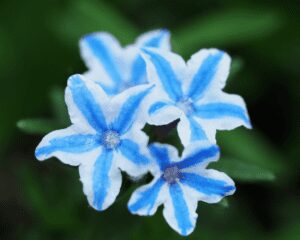
- ‘Grace Ward,’ a groundcover that reaches 12 inches in height and has deep blue flowers
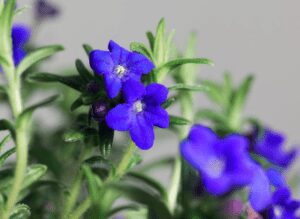
- ‘Blue Star,’ a cultivar with deep blue flowers and white margins
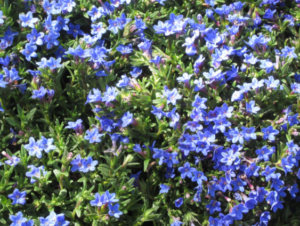
- ‘Heavenly Blue’ is a low-growing ground cover with hairy grey-green leaves and royal blue flowers.
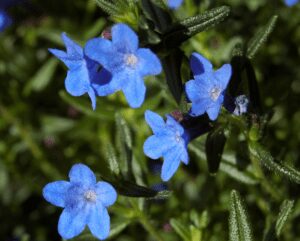
What is Lithodora?
This plant, known botanically as Lithodora diffusa, is a ground cover with masses of tiny, bright blue flowers that bloom from late spring through most of the summer.
Want to learn more about Lithodora groundcover cultivation? Find out by reading on.
Lithodora Plant Details In gardens, Lithodora grows just 6 to 10 inches (15-25 cm) tall, yet a single plant can spread 24 to 36 inches (60-90 cm) (61-91 cm.).
Plant hardiness zones 6 through 10, Lithodora can be quickly grown in gardens. The dense canopy of narrow, dark green leaves in the southernmost regions remains green throughout the year.
Are there any pests on Lithodora diffusa?
Treat the plant with insecticidal soap spray if you notice aphids. Generally, pests do not pose a problem.
Is Lithodora star an evergreen?
Lithodora Star is simple to cultivate and blooms brilliantly. Its mats of evergreen foliage spread slowly and create an excellent ground cover for a rock garden or screen.
Lithodora ‘Star’ develops flowers with a white edging, giving the blue color of the flowers a star-like appearance.
This plant thrives in a sunny, open environment. Grow in acidic, well-drained soil in full sun. Spread through semi-deciduous cuttings.
So, the answer is Yes, it is evergreen.






















